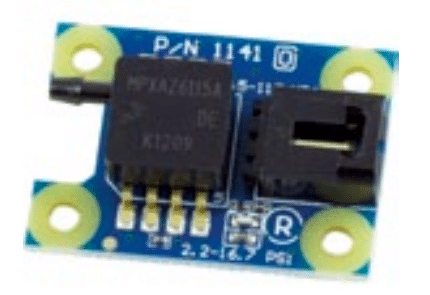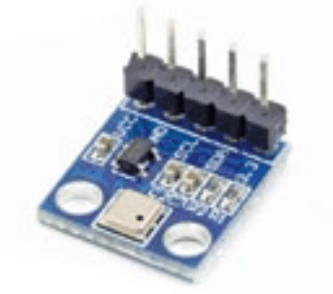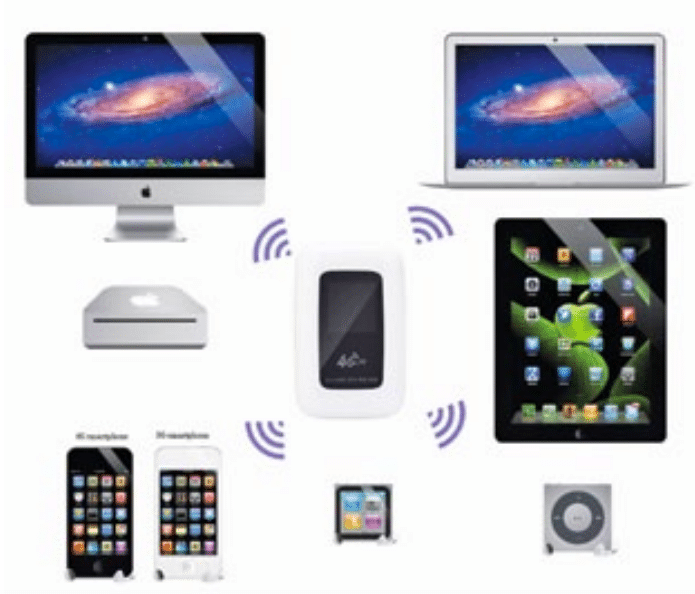The pressure sensor is also termed as a pressure transducer or pressure switch. Depending on the type of output interface, pressure sensors are classified as analogue and digital. A pressure sensor may also be called a different name (such as ‘load cell’ for a weighing machine) depending on the application.
Different kinds of pressure sensors used in some popular applications are:
1. Industrial
Gases and pressures in industrial units, for example, in the chemical industry, are precisely monitored and controlled using pressure sensors. There are also board-level pressure sensors, normally mounted on PCBs, that are used to measure the pressure of gases or liquids.
2. Computing
Many computers and smartphones have touchscreen displays with pressure sensors. Whenever pressure is applied on the touchscreen, the sensor determines the point of application and accordingly generates an electric signal that informs the processor to take further actions.
3. Automotive
In automotive industry, pressure sensors monitor the oil and coolant pressure and regulate the power. Pressure sensors constitute part of the anti-lock braking system. Air bag systems also use pressure sensors to activate the bags during crash, ensuring safety of the vehicle occupants.
4. Medical
Pressure sensors are used in digital blood pressure monitors and ventilators to optimise these according to patient’s health and requirements. Thesesensors utilise piezoresistive silicon MEMS technology.
5. Aviation
In airplanes, pressure sensors maintain a balance between the atmospheric pressure and control systems of the airplane. These not only protect the various internal components of the airplane but also give exact data about the external environment
6. Marine
Pressure sensors are used in ships and submarines to estimate the depth at which these are operating and for detailing the marine conditions so that the electronic systems stay safe. Oxygen requirements are also regulated by pressure sensors.
7. Meteorology
Absolute pressure sensors measure pressure relative to a vacuum. Designed with a reference vacuum enclosed within the sensor itself, these can also measure atmospheric pressure. An absolute gas pressure sensor is shown in Fig. 1 and barometric pressure sensor in Fig. 2.


Why do 3G smartphones support 4G network through a Wi-Fi router but not with a 4G SIM card?
There are two different combinations here: 3G phone with 4G SIM, and 3G phone with Wi-Fi router. 3G smartphones don’t support 4G network because these work on wide-band code-division multiple access (WCDMA) technology. Whereas, 4G, the fourth generation of mobile telecommunications technology with the first release of Long Term Evolution (LTE) standard, is comparatively a new technology that is different from WCDMA. Therefore, theoretically, 4G SIM card will not work in a 3G handset.
In order to use 4G SIM in a 3G smartphone, you need to enable LTE option. You can find many tips and tricks on the Internet claiming that 4G SIMs can be used in 3G smartphones. It is also claimed that a 4G SIM card in a 3G phone will give 3G speed only. However, some websites caution users that the trick may cause serious damage to their device and also may not work for all the devices.
You can use 4G network on your 3G phone by connecting it to a portable Wi-Fi device running on 2.4GHz or 5GHz frequency because the phone is not directly accessing the service provider network, rather it’s the router using the 4G network. The ‘3G’ of the phone is irrelevant, so it doesn’t even need a SIM card to access Wi-Fi network. However, the 4G portable WiFi device needs to use a 4G SIM card. The 3G phone, in turn, connects to the 4G portable Wi-Fi device through Wi-Fi tethering or mobile hotspot (Fig. 3).







